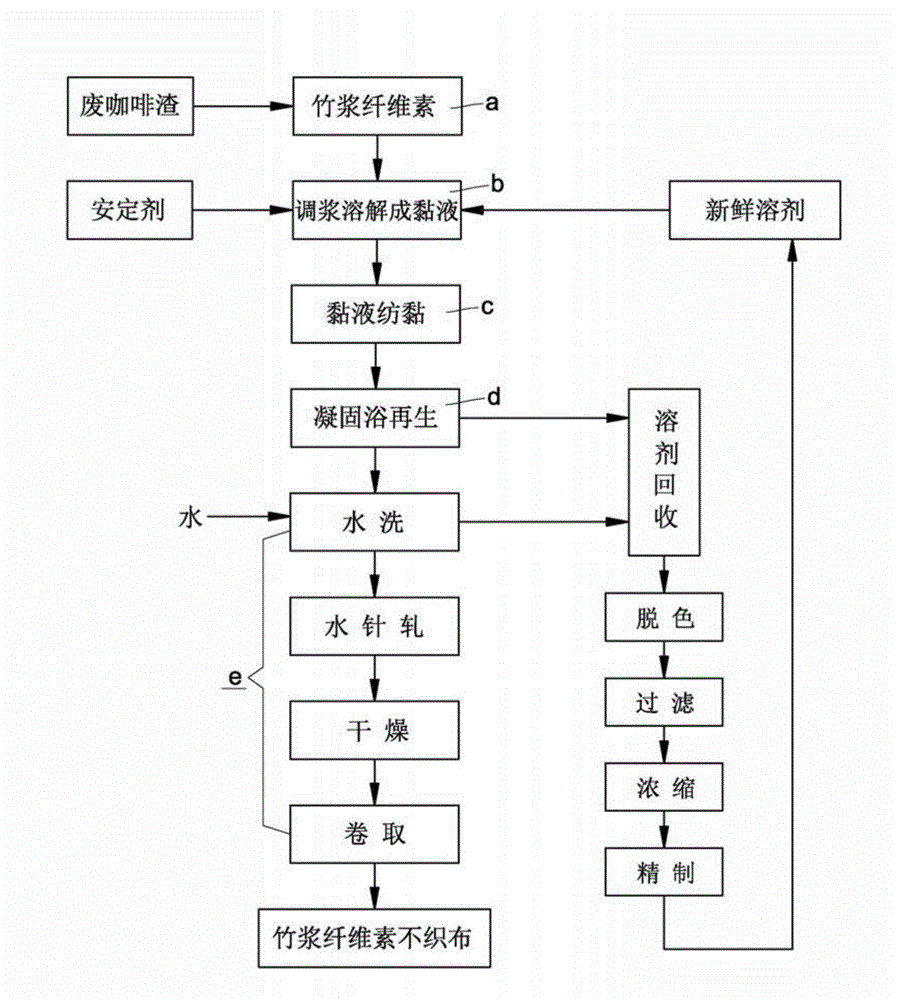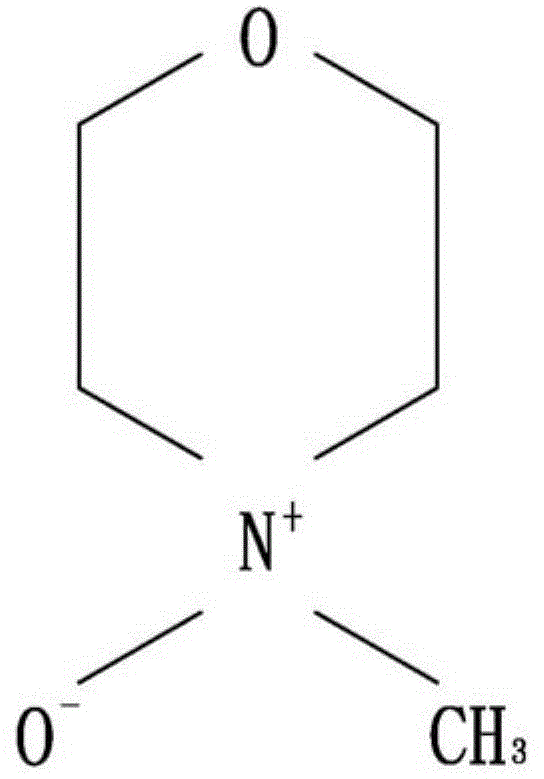Method for preparing deodorizing bamboo pulp cellulose nonwoven fabrics through spun-bond mode
A technology of cellulose and cellulose content, applied in the direction of single-component cellulose rayon, wet spinning, non-woven fabrics, etc., can solve the problems of bamboo fiber without deodorization and environmental hazards
- Summary
- Abstract
- Description
- Claims
- Application Information
AI Technical Summary
Problems solved by technology
Method used
Image
Examples
Embodiment Construction
[0022] In order to further illustrate the production process and efficacy of the present invention, the illustrations and various test examples are hereby described in detail as follows:
[0023] see Figure 1 to Figure 5 Shown, the present invention prepares the method for the bamboo pulp cellulose nonwoven fabric with deodorizing function with spun-bonded mode, and its step comprises:
[0024] a. Add waste coffee residue (Coffee residue) to bamboo pulp (Bamboo pulp) as a raw material; the waste coffee residue is first ground at a high speed into 500nm-900nm (nanometer) micro-particles and then added to bamboo pulp. The bamboo pulp is selected α-bamboo pulp cellulose with a cellulose content of more than 50%, the cellulose polymerization degree (degree ofpolymerization, referred to as DP) is between 350 and 750;
[0025]b. Add methylmorpholine N-oxide (N-methylmorpholine N-oxide, NMMO for short, its chemical structure is as follows figure 2 Shown) and phenyl oxazolam (1,3-...
PUM
| Property | Measurement | Unit |
|---|---|---|
| Base weigh | aaaaa | aaaaa |
Abstract
Description
Claims
Application Information
 Login to View More
Login to View More - R&D
- Intellectual Property
- Life Sciences
- Materials
- Tech Scout
- Unparalleled Data Quality
- Higher Quality Content
- 60% Fewer Hallucinations
Browse by: Latest US Patents, China's latest patents, Technical Efficacy Thesaurus, Application Domain, Technology Topic, Popular Technical Reports.
© 2025 PatSnap. All rights reserved.Legal|Privacy policy|Modern Slavery Act Transparency Statement|Sitemap|About US| Contact US: help@patsnap.com



